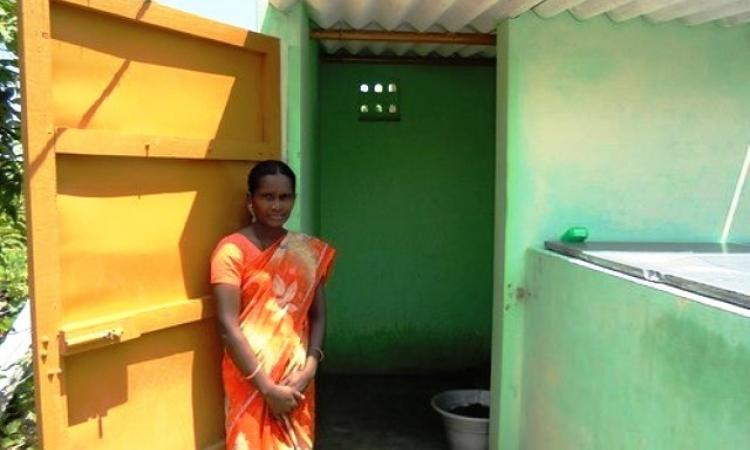
According to the recent figures by the World Health Organisation and UNICEF [1], India continues to have the highest number of people defecating in the open. Census 2011 had revealed that only 32.7 percent of rural population has access to toilets. Open defecation has been linked to serious health consequences and loss of wages due to illnesses. For women and girls, the consequences of inadequate sanitation go beyond ill health. Apart from the humiliation of relieving oneself in the open, there is also the fear of being harassed, experiencing violence and the psychosocial stress that comes with it.
The article--From toilet insecurity to toilet security: Creating safe sanitation for women and girls, published in the journal WIREs Water recently--throws light on the issues women face due to the lack of inadequate sanitation in India. Toilet insecurity is not only about the multiple risks a woman subjects herself to while defecating in the open due to lack of toilet facility, but it is also about having access to a public toilet which is unusable or unsafe. Besides less number of toilets, inadequate sanitation includes poor quality toilets--like poor design, lack of cleanliness and maintenance, insufficient lighting, and other infrastructural factors--that make toilets unusable for women.
Toilet insecurity and gender
The article mentions that many current sanitation policies recognise women’s specific sanitation needs like the privacy required during menstruation, the changed bladder and bowel movements during pregnancy and more. The toilet insecurity that women face, however, has little to do with her biology; it is more to do with the gender inequality prevalent in the society. The absence of a toilet in her house is indicative of a woman's lack of decision-making capacity in her own house. The men who manage the household income are less likely to use toilets and might be convinced that toilet is not a good investment.
India’s Swachh Bharat Abhiyan–Grameen is an ambitious plan to end rural open defecation in the country. For a country that accounts for 59 percent of the world’s open defecators, SBMG policy has laudable goals and addresses a monumental challenge, argues the article. What makes the programme unique is the emphasis on women’s participation; women are included at every stage--from planning to post-implementation management--in the programme and the requirements of women and girls are taken into account. Non-governmental organisations are also involved in spreading awareness about menstrual hygiene and to develop economic models for sanitary napkin access. Funding is also available to raise awareness and skills among all stakeholders.
The paper, however, says that attributing terms like ‘monumental challenge’ and ‘global sanitation crisis’ to the sanitation situation in the country only helps in raising a false urgency, compelling policymakers to focus on toilet building alone. If that happens, everything else, including women’s needs, could take a backseat. Though SBMG was designed with the best of intentions, some of its guidelines do not help women at all. For example, its promotional message of the daughter-in-law being the pride of the family and building toilets is essential to help her from having to defecate in the open only worked in making the women’s seclusion complete in some states like Rajasthan.
Sanitation is not inherently gender transformative. The paper says toilet security cannot be achieved unless gender inequalities are prioritised, sometimes, even above sanitation. Research makes it clear that the sanitation provision and/or behaviour change alone cannot eradicate open defecation. Focus must be more on tackling the gender inequalities that lead to toilet insecurity.
The article ends by saying that there is an urgent need to move beyond policies providing women with toilets to policies committed to changing the overarching power disparity between men and women. Solutions to the global sanitation crisis begin with transforming toilet insecurity to toilet security.
References
1. World Health Organisation and UNICEF (2014) Progress on drinking water and sanitation. Accessed on 5th July 2016.
A research paper on what more can be done to solve India's sanitation issues here.
/articles/safe-sanitation-women